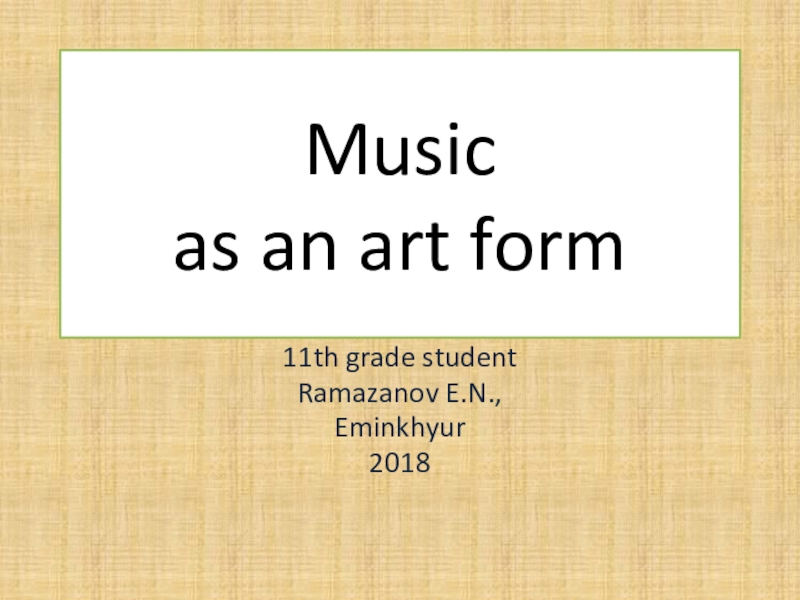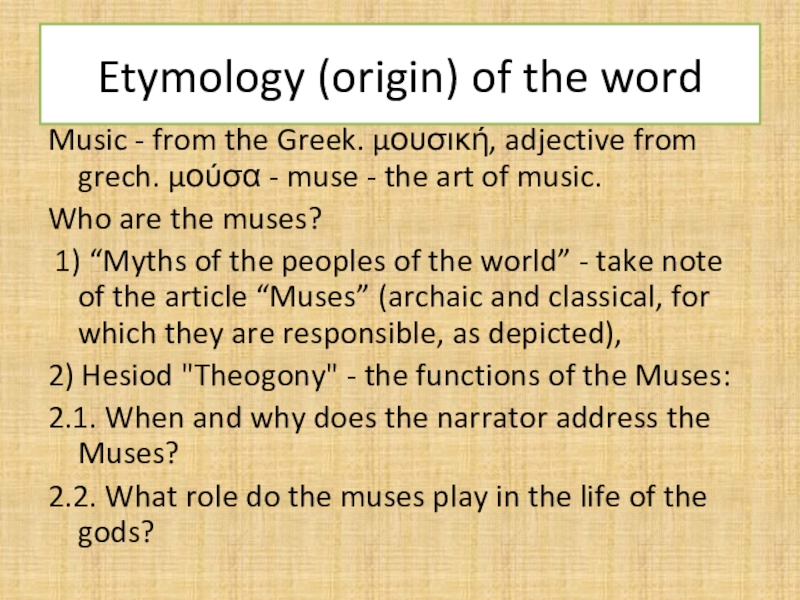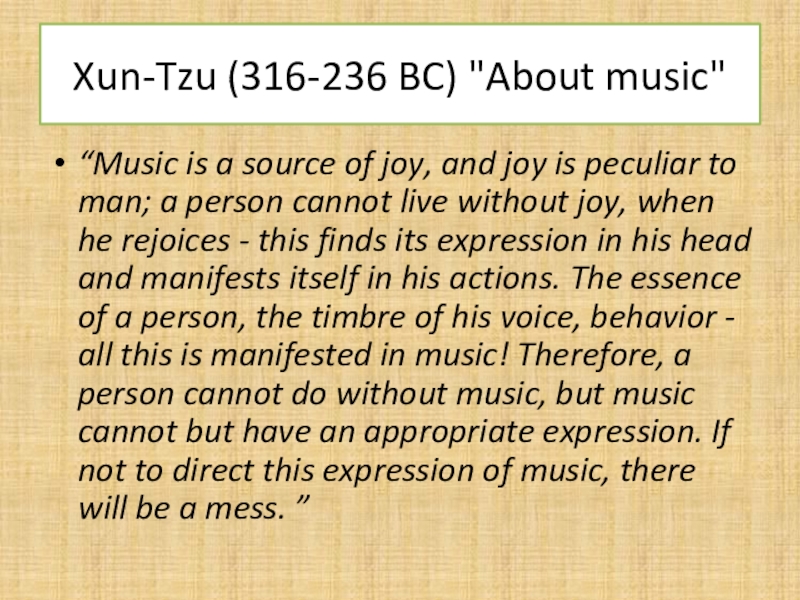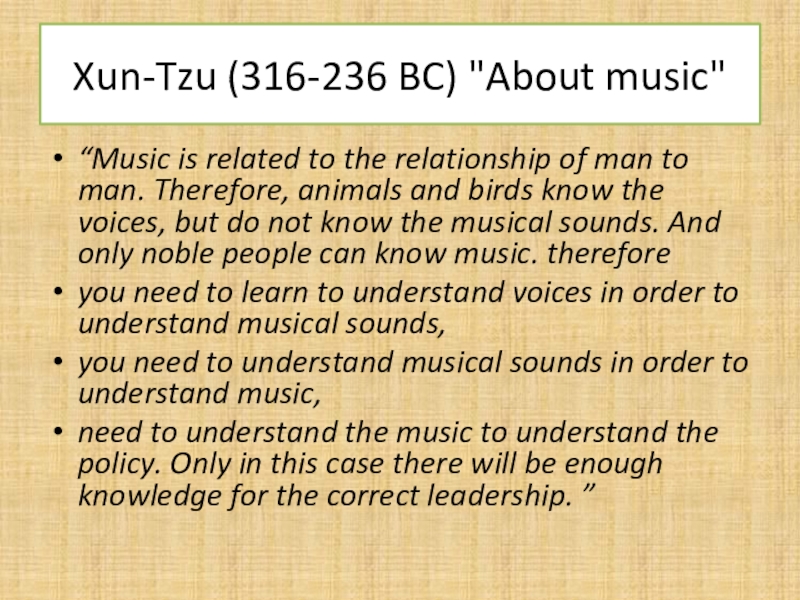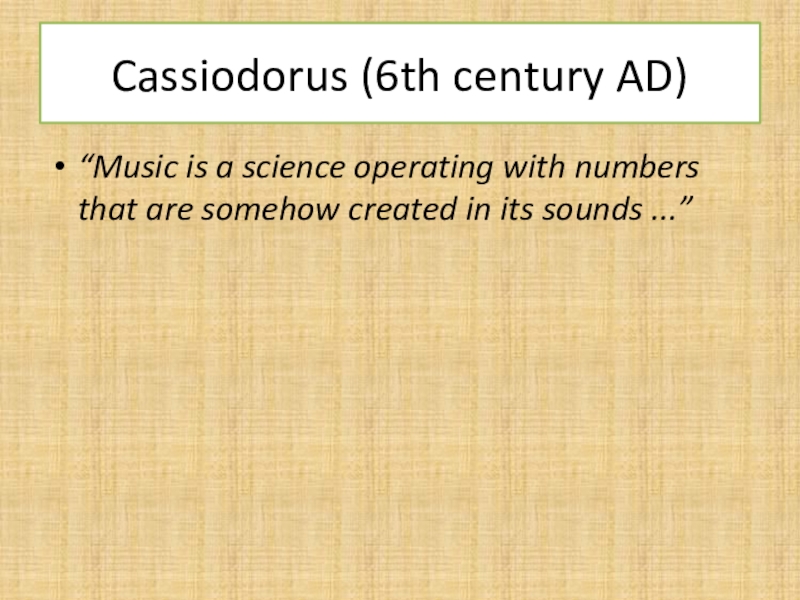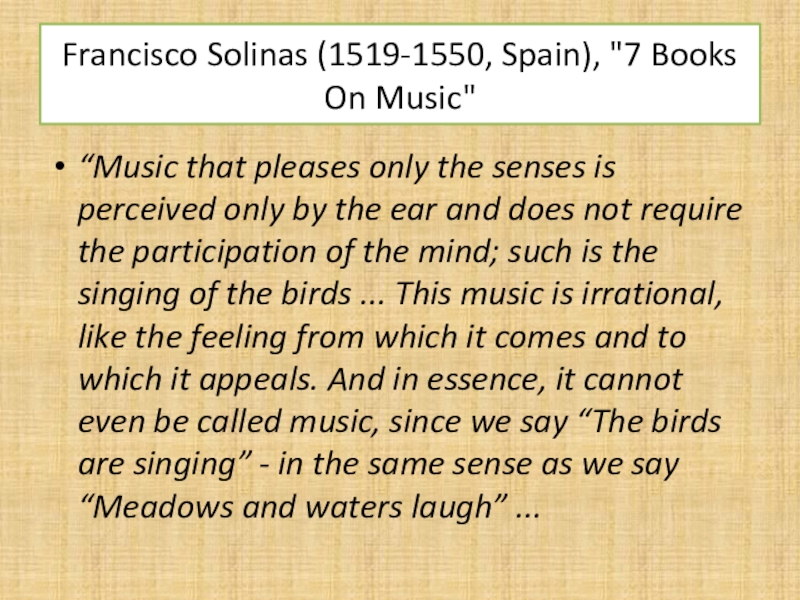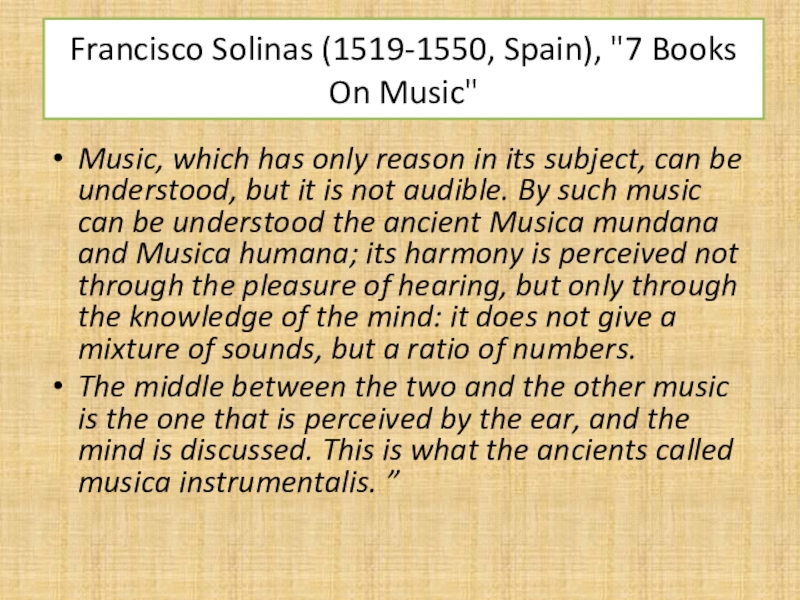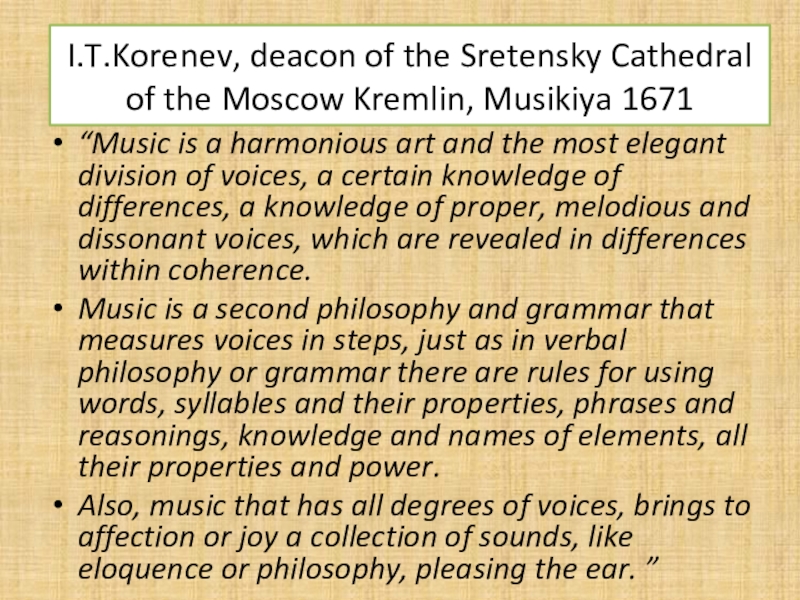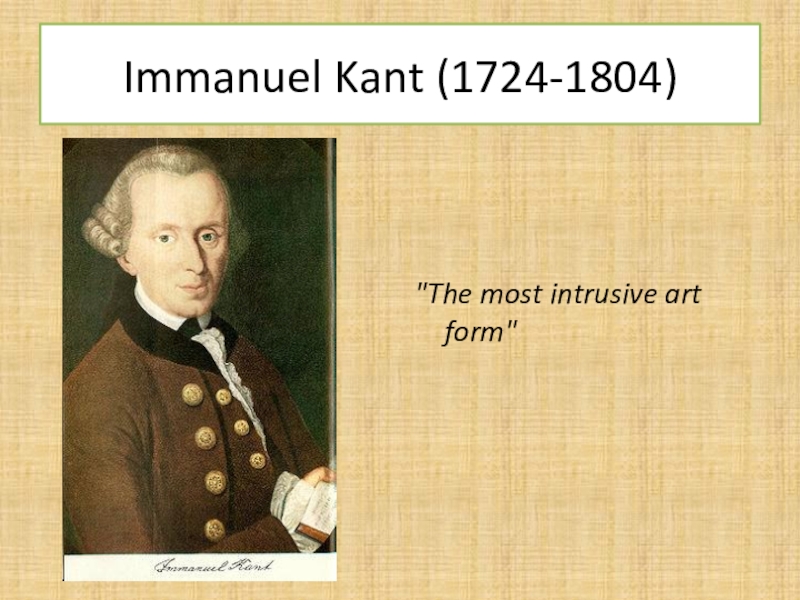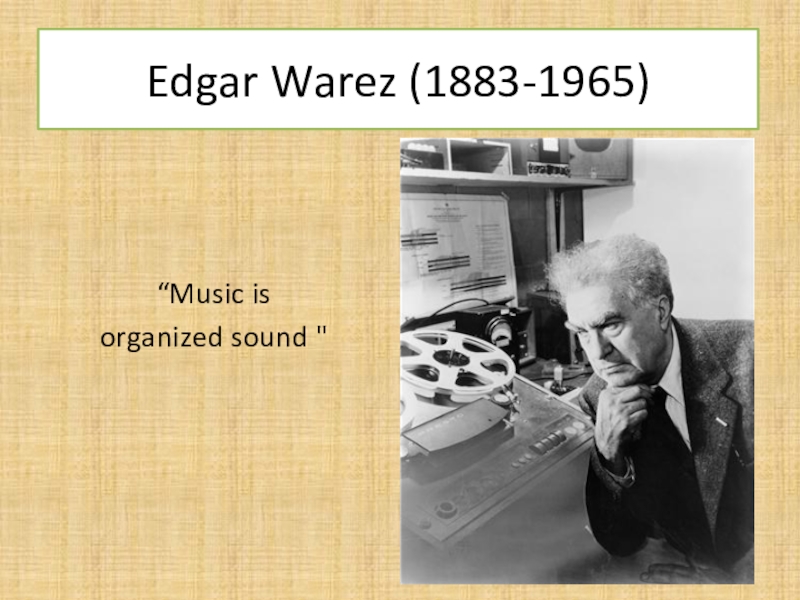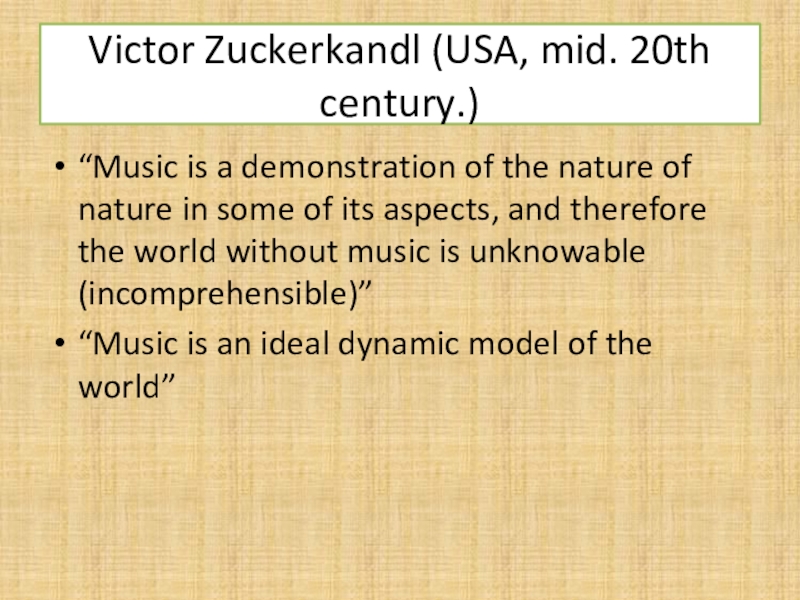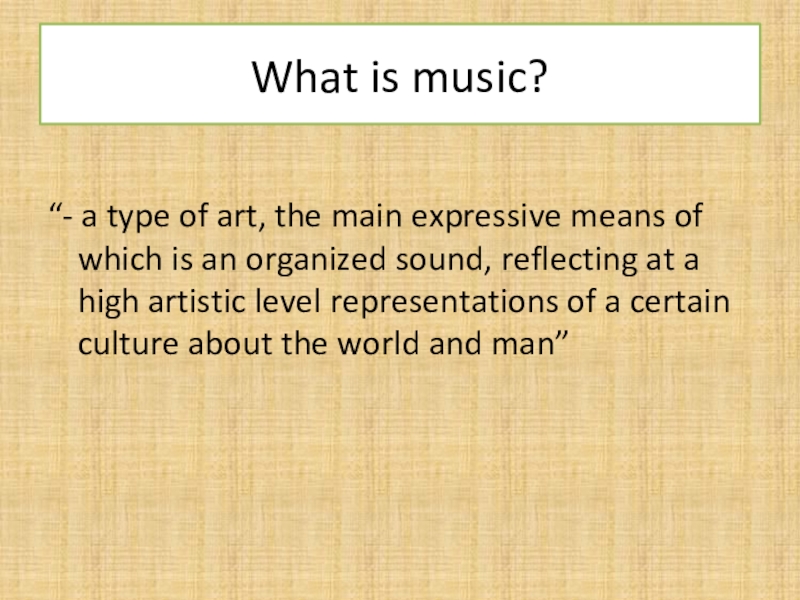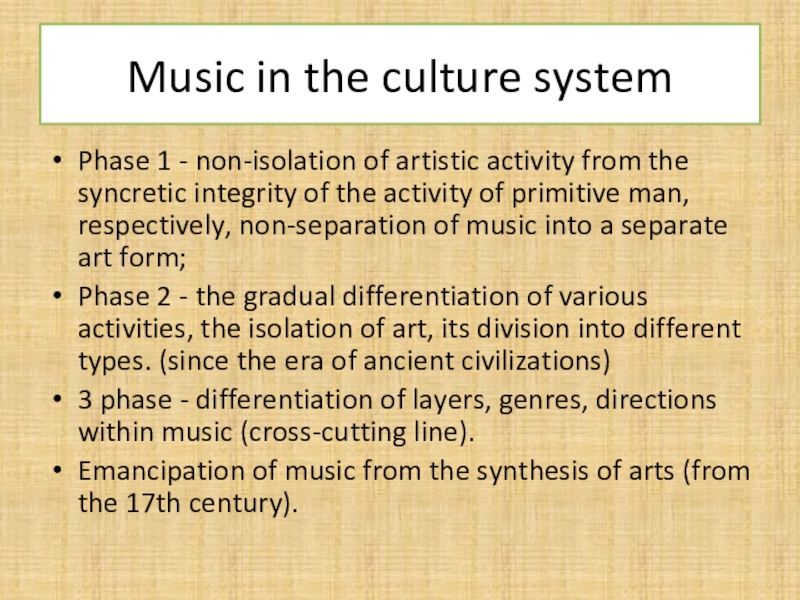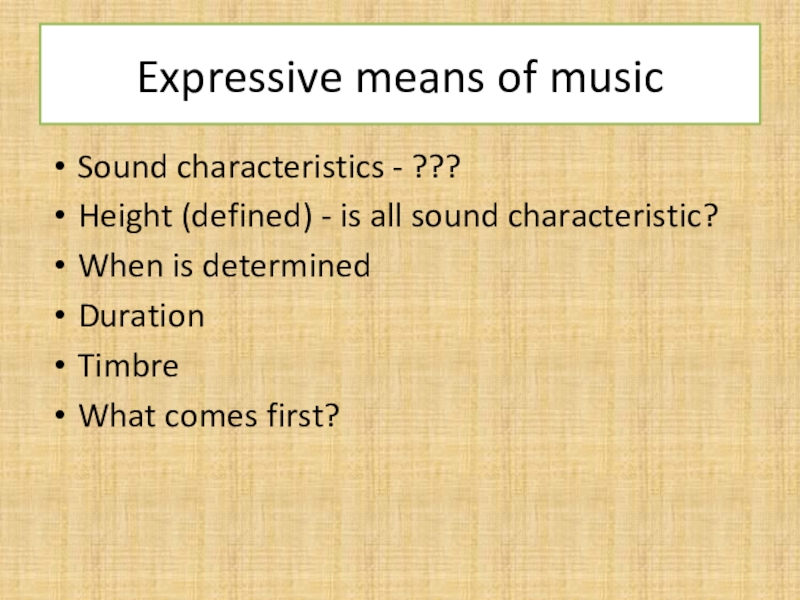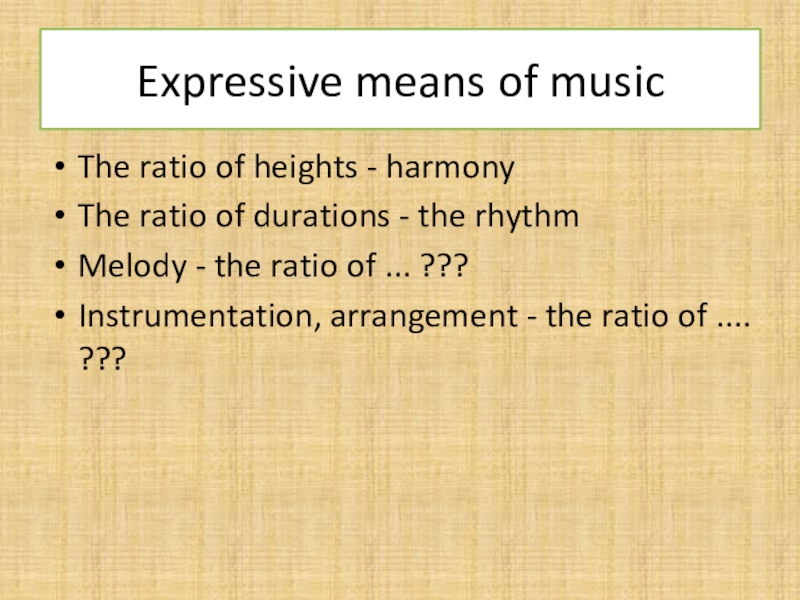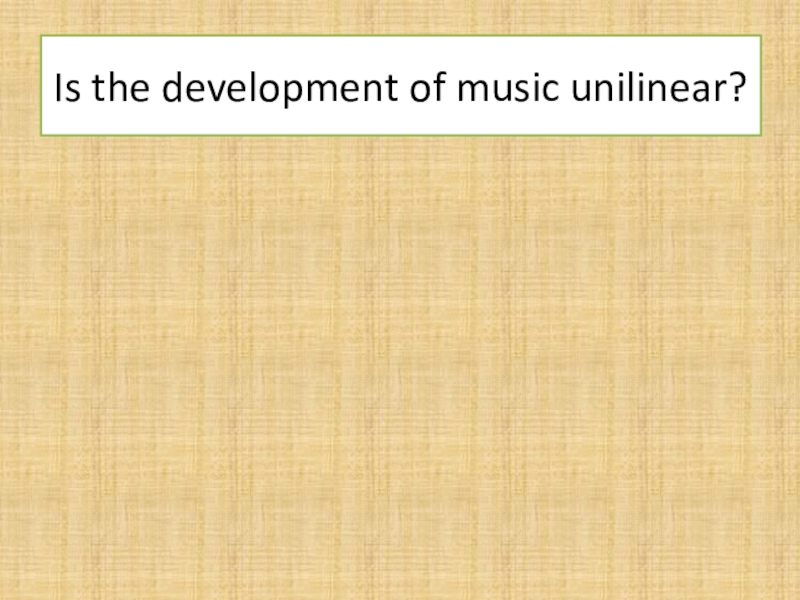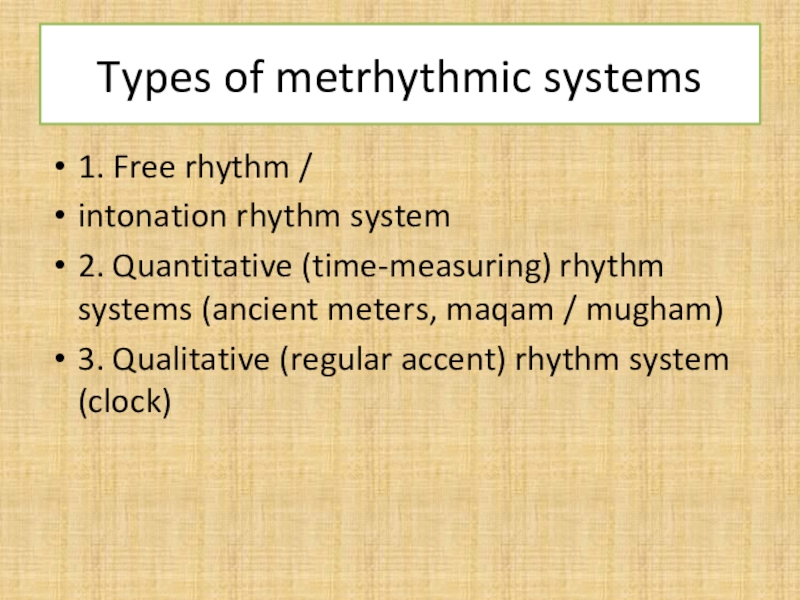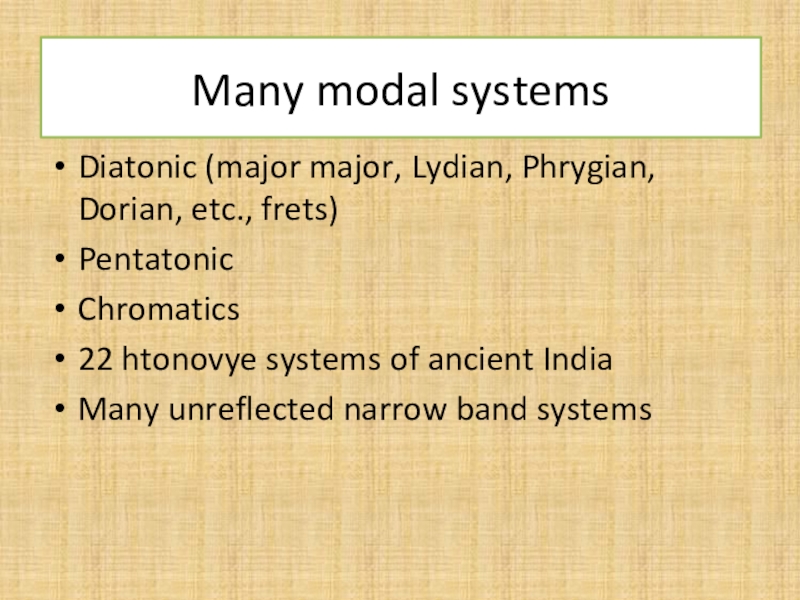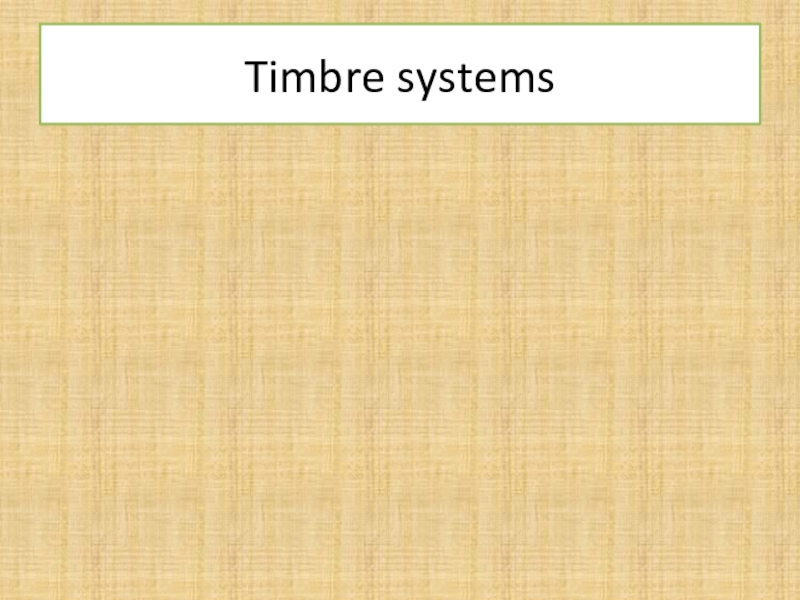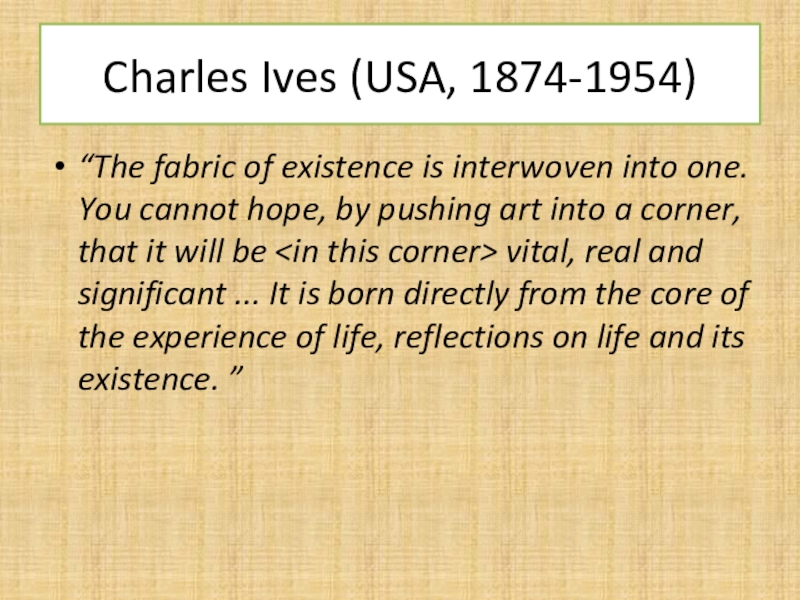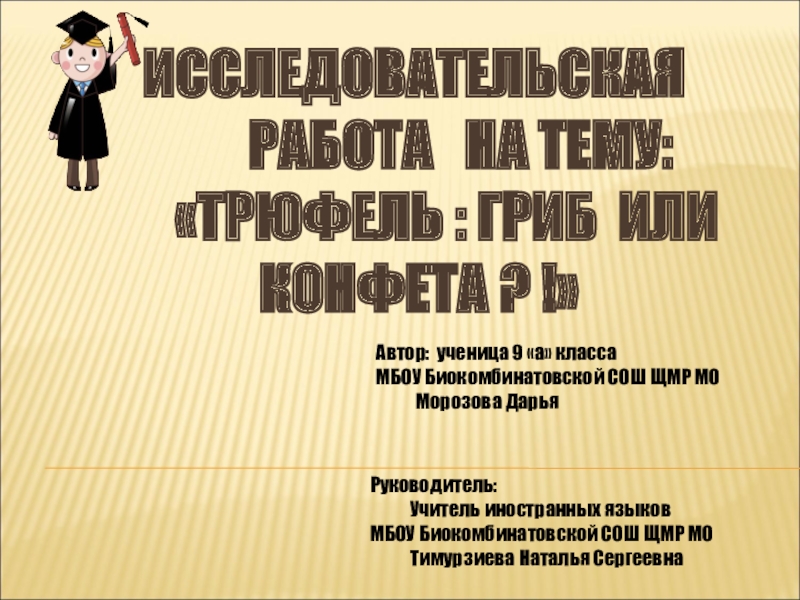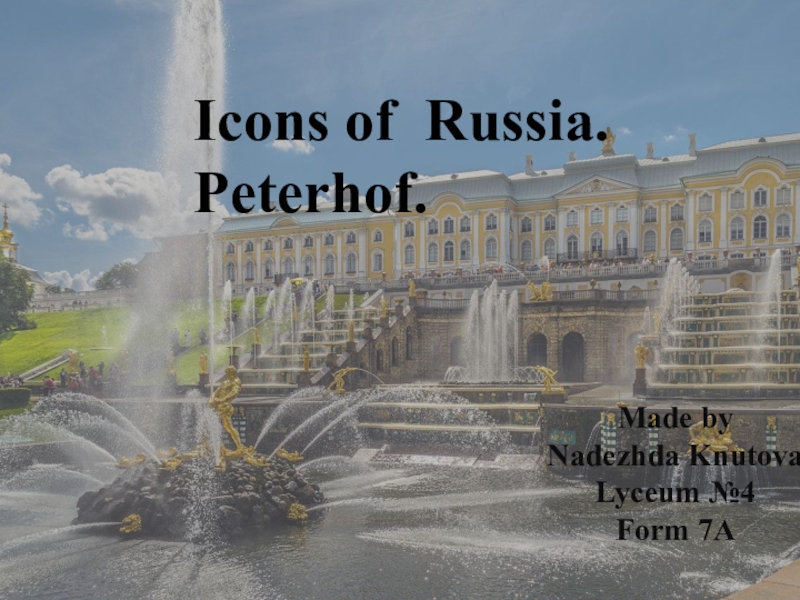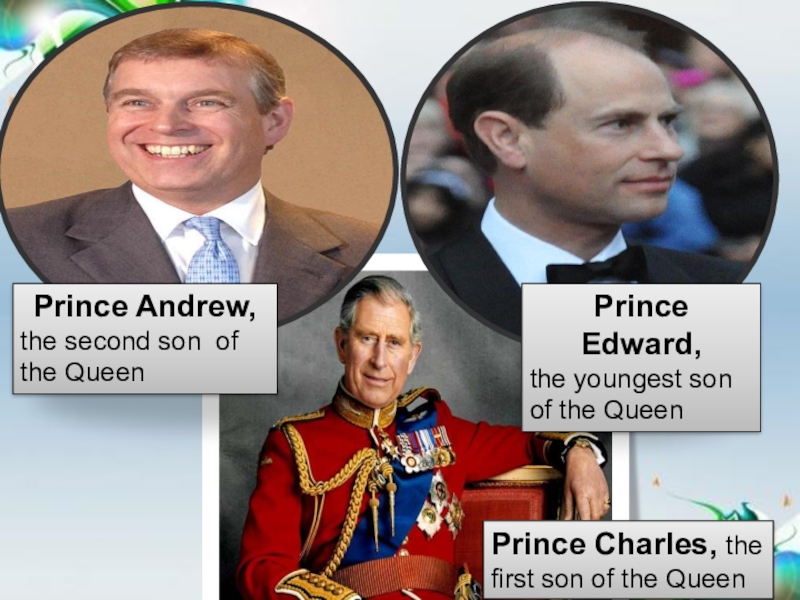- Главная
- Разное
- Образование
- Спорт
- Естествознание
- Природоведение
- Религиоведение
- Французский язык
- Черчение
- Английский язык
- Астрономия
- Алгебра
- Биология
- География
- Геометрия
- Детские презентации
- Информатика
- История
- Литература
- Математика
- Музыка
- МХК
- Немецкий язык
- ОБЖ
- Обществознание
- Окружающий мир
- Педагогика
- Русский язык
- Технология
- Физика
- Философия
- Химия
- Шаблоны, фоны, картинки для презентаций
- Экология
- Экономика
Презентация, доклад Music as an Art form (11 класс)
Содержание
- 1. Презентация Music as an Art form (11 класс)
- 2. Etymology (origin) of the wordMusic - from
- 3. Xun-Tzu (316-236 BC) "About music"“Music is a
- 4. Xun-Tzu (316-236 BC) "About music"“Music is related
- 5. Cassiodorus (6th century AD)“Music is a science
- 6. Francisco Solinas (1519-1550, Spain), "7 Books On
- 7. Francisco Solinas (1519-1550, Spain), "7 Books On
- 8. I.T.Korenev, deacon of the Sretensky Cathedral of
- 9. Immanuel Kant (1724-1804)"The most intrusive art form"
- 10. Edgar Warez (1883-1965)“Music isorganized sound "
- 11. Victor Zuckerkandl (USA, mid. 20th century.)“Music is
- 12. What is music?“- a type of art,
- 13. Music in the culture systemPhase 1 -
- 14. Expressive means of musicSound characteristics - ???Height
- 15. Expressive means of musicThe ratio of heights
- 16. Is the development of music unilinear?
- 17. Types of metrhythmic systems1. Free rhythm /intonation
- 18. Many modal systemsDiatonic (major major, Lydian, Phrygian,
- 19. Timbre systems
- 20. Charles Ives (USA, 1874-1954)“The fabric of existence
- 21. Thanks for attention!
Слайд 2Etymology (origin) of the word
Music - from the Greek. μουσική, adjective
Who are the muses?
1) “Myths of the peoples of the world” - take note of the article “Muses” (archaic and classical, for which they are responsible, as depicted),
2) Hesiod "Theogony" - the functions of the Muses:
2.1. When and why does the narrator address the Muses?
2.2. What role do the muses play in the life of the gods?
Слайд 3Xun-Tzu (316-236 BC) "About music"
“Music is a source of joy, and
Слайд 4Xun-Tzu (316-236 BC) "About music"
“Music is related to the relationship of
you need to learn to understand voices in order to understand musical sounds,
you need to understand musical sounds in order to understand music,
need to understand the music to understand the policy. Only in this case there will be enough knowledge for the correct leadership. ”
Слайд 5Cassiodorus (6th century AD)
“Music is a science operating with numbers that
Слайд 6Francisco Solinas (1519-1550, Spain), "7 Books On Music"
“Music that pleases only
Слайд 7Francisco Solinas (1519-1550, Spain), "7 Books On Music"
Music, which has only
The middle between the two and the other music is the one that is perceived by the ear, and the mind is discussed. This is what the ancients called musica instrumentalis. ”
Слайд 8I.T.Korenev, deacon of the Sretensky Cathedral of the Moscow Kremlin, Musikiya
“Music is a harmonious art and the most elegant division of voices, a certain knowledge of differences, a knowledge of proper, melodious and dissonant voices, which are revealed in differences within coherence.
Music is a second philosophy and grammar that measures voices in steps, just as in verbal philosophy or grammar there are rules for using words, syllables and their properties, phrases and reasonings, knowledge and names of elements, all their properties and power.
Also, music that has all degrees of voices, brings to affection or joy a collection of sounds, like eloquence or philosophy, pleasing the ear. ”
Слайд 11Victor Zuckerkandl (USA, mid. 20th century.)
“Music is a demonstration of the
“Music is an ideal dynamic model of the world”
Слайд 12What is music?
“- a type of art, the main expressive means
Слайд 13Music in the culture system
Phase 1 - non-isolation of artistic activity
Phase 2 - the gradual differentiation of various activities, the isolation of art, its division into different types. (since the era of ancient civilizations)
3 phase - differentiation of layers, genres, directions within music (cross-cutting line).
Emancipation of music from the synthesis of arts (from the 17th century).
Слайд 14Expressive means of music
Sound characteristics - ???
Height (defined) - is all
When is determined
Duration
Timbre
What comes first?
Слайд 15Expressive means of music
The ratio of heights - harmony
The ratio of
Melody - the ratio of ... ???
Instrumentation, arrangement - the ratio of .... ???
Слайд 17Types of metrhythmic systems
1. Free rhythm /
intonation rhythm system
2. Quantitative (time-measuring)
3. Qualitative (regular accent) rhythm system (clock)
Слайд 18Many modal systems
Diatonic (major major, Lydian, Phrygian, Dorian, etc., frets)
Pentatonic
Chromatics
22 htonovye
Many unreflected narrow band systems
